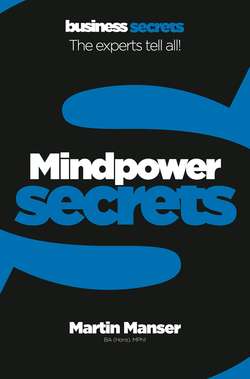Читать книгу Mindpower - Martin Manser - Страница 10
Оглавление1.4 Identify your learning style
People learn in different ways. If you want to use your mind effectively, you will need to know the best way in which you learn. There are three main styles of learning, which are allied to our senses.
• Visual learners. Such people like to see information in pictures, diagrams, charts, tables and in writing.
• Auditory learners. They like to listen to information and then discuss it, listening to what others say to help them learn.
• Kinesthetic learners. These people like to be active and learn by doing. They are attuned to the feel and movement of things.
case study The original working group that met to develop a new marketing strategy was made up of three academically inclined graduates, Stephen, Andrew and Greta, who were very gifted at logical and verbal arguments. They loved to discuss the detailed wording of the strategy and tactics, but never made any real progress on the main part of the campaign. When Ros joined the committee, everything changed. Her skills were on the creative and visual, ‘thinking outside-the-box’ side. She quickly enabled the whole group to move on, as she drew pattern diagrams and flow charts of the work involved. This new way of working resulted in fresh ideas that stirred the whole committee into action to tackle the campaign.
Personal learning
Knowing where your preferences lie is the first step. You can then use that knowledge as a basis to challenge yourself to extend your range of learning styles. The aim is to be balanced and well-adjusted so that you learn in ways that are less familiar to you and are not your preferred style. Seek opportunities to practise a different style.
Team development
If you work in a team, make sure that other members of the team have different learning styles so that you complement one another.
Presentations
If you are presenting information to others, you should be aware that people learn in different ways. Good presenters use a multi-sensory approach to include different styles of learning so that every member of the audience is able to take in the presentation effectively. This means that you should provide visual aids that illustrate your argument, give headings to support it, and provide opportunities for discussion and further expression through stories and role play.
If you work in a team, make sure that its members have different learning styles to complement one another.
